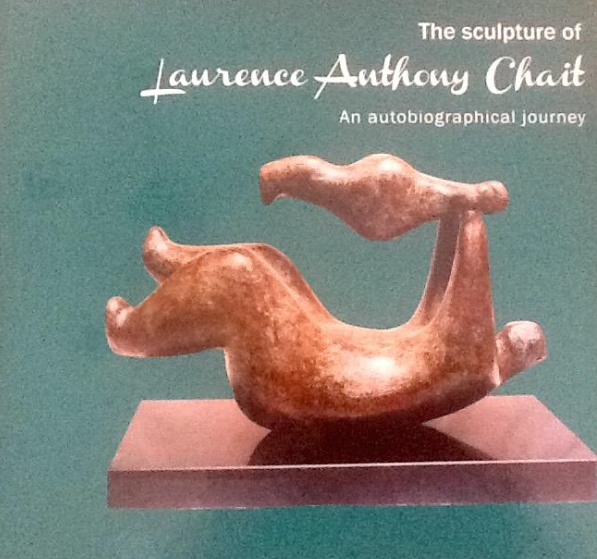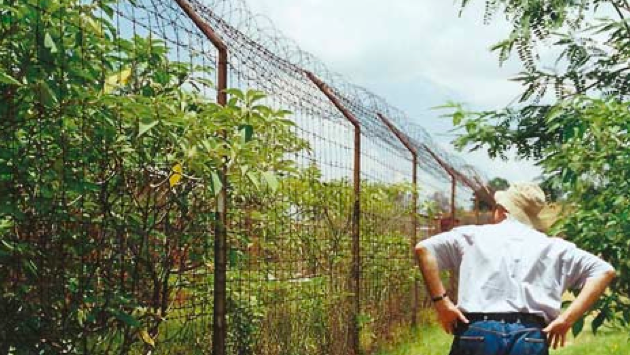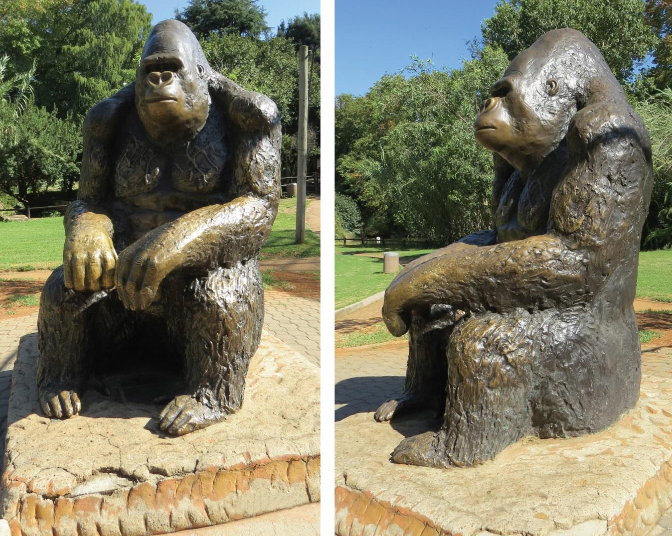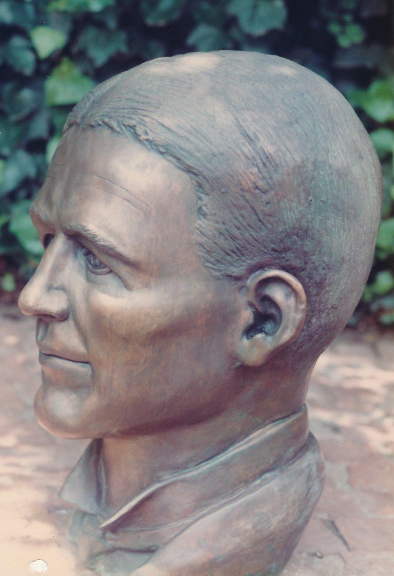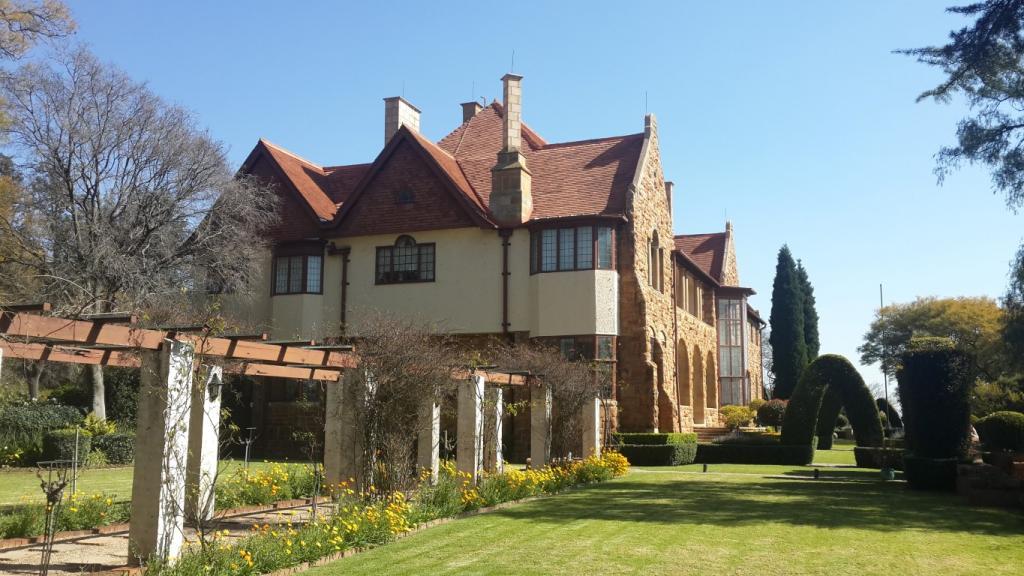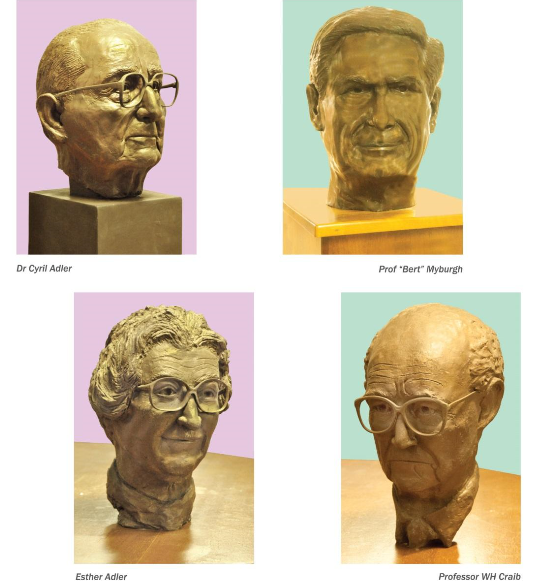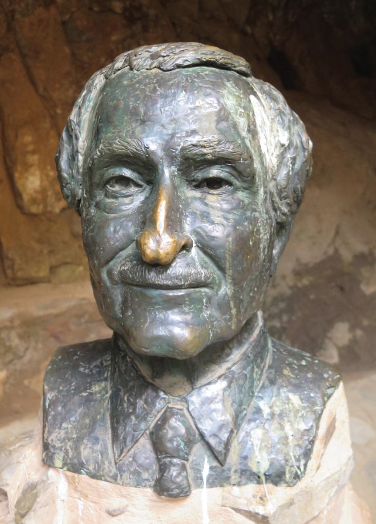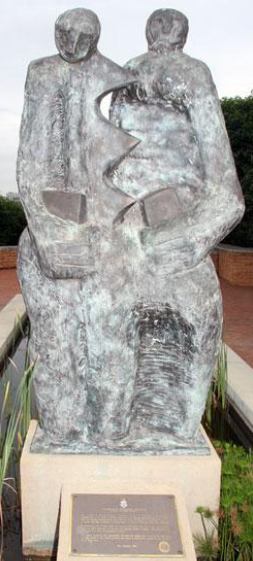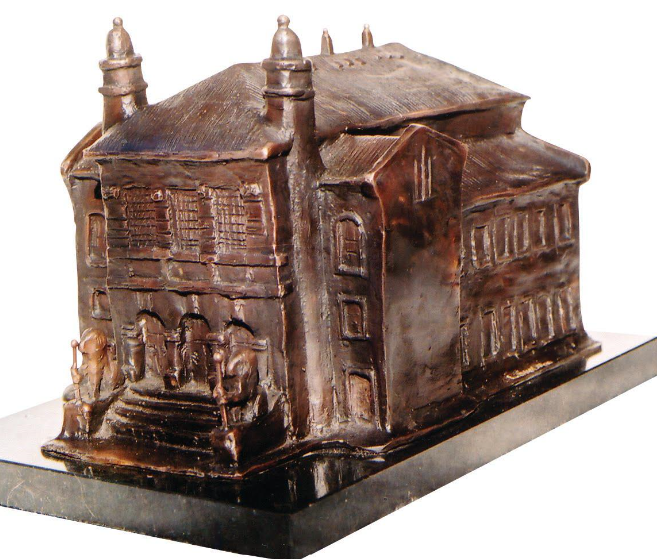
Some people are determined and fortunate enough to live two lives in one lifetime. Laurence Chait is one of this special breed. He has lived a life in medicine and a life in art. He is a well-known Johannesburg medical specialist with a distinguished and long medical career as practitioner and professor of Wits University. His specialization is plastic and reconstructive surgery. His particular expertise has been the treatment of children born with cleft lip and palate deformities; he has changed the lives of thousands of children.
Laurence is also a talented sculptor. This handsome, splendidly bound book presents his autobiography in the visual format. It is a compilation of the finest of his sculptures. It is a worthy and worthwhile photographic record of his art and life in art. Although it is labelled an autobiography, Laurence tells us very little about his life in medicine. This is a book strictly about his art.
Book Cover
Family matters and Laurence has dedicated his book to his wife, children and grandchildren so that this is a record to pass on his achievements in art to the next generations. There is a huge pride in his creativity. Laurence pays tribute to his parents. It was his mother who when he was nine years old clearly admired his plasticine elephant and decreed that he would become a plastic surgeon cum sculptor, “like Jack Penn”. That was quite an aspiration and model to live up to. Jack Penn was the great plastic surgeon of Johannesburg, who during the Second World War made a remarkable contribution in reconstructive surgery for military casualties and who founded his own hospital, the Brenthurst Clinic. Jewish mothers are known to turn all their sons into doctors and lawyers and Laurence delivered on this dream.
It is interesting to read of the Chait family’s background. His father Benjamin was a doctor who worked at the Zonderwater Prisoner of War camp near Cullinan during the Second World War and Laurence’s friends were the POWs who made him his first sandals and drew pictures of him as a baby. A fine sketch of Laurence as a baby by one of these Italian artists is included in the book as a full page image. Zonderwater was a major centre for Italian prisoners of war; it opened in 1941 and by the end of 1943 held 63 000 prisoners of war. It was the largest of Italian prisoner of war camps (click here for details). One Italian artist inmate was Eduardo Villa who later made his career as a prominent and successful artist in South Africa. South Africa’s art was enriched by men such as these. Chait belongs to the next generation of artists but how extraordinary that there was this early link.
Remains of the World War II inner fence at Zonderwater (Peter Spargo)
Laurence is clearly a man who expresses his mood and his personality through his hands. He has worked in a range of media: concrete, stone, wood and bronze. His sculptures are abstract, tactile and the lines follow the contours of the material he is working on. His other works are realistic representations of people and animals. The first four chapters of the book are divided into periods and primary materials and he then moves on to his work in bronze and the process of bronze casting. The book is superbly and generously illustrated with fine photographs. It is very much a visual record; unfortunately the individual works are not dated nor is their size or provenance given. The book is not a complete record of all of Chait’s work. He responded to my question by explaining: “There are about 400 additional art pieces that I produced that are not included in this book. Most of these were sold through galleries and I have no idea who owns them.” The glossary lists 10 solo exhibitions held between 1975 and 2006. In addition Chait has exhibited at various group exhibitions such as the annual Medical Arts Society (Wits University) between 1980 and 2009. His work is in corporate collections, mainly in South Africa but his sculptures have also gone to London and Belgium. Numerous works are in private collections throughout the world.
I found the chapter on the casting of bronze works at the Renzo Vignali Fine Art Artistic Foundry in Pretoria North particularly useful as it documents how a bronze is made and what part this foundry has played in South African art. It is a fine tribute to the Gamberini family, Luigi, Carlo and Lorenzo. The Gamberini grandfather was brought to South Africa in the mid-1930s to cast the bronze wagons made for the Voortrekker Monument. The son, Luigi, returned to a Florence foundry to learn his trade and so came to be conscripted into the Italian Army and by strange fate ended his war as an internee at Zonderwater not far from his own home. There is a full explanation (this must be Laurence the teacher at work) of the lost wax process and an unusual photo of the ceramic shell around the hollow wax model. Artists seldom acknowledge the background players in the making of their art but Laurence makes an important contribution to art literature in this specific section.
In popular Johannesburg culture, Laurence is known as the sculptor of two of our children’s favourite works of art, both now to be found and enjoyed at the Johannesburg Zoo, the much loved bronze, Max the Gorilla and Jock of the Bushveld. The Parktown and Westcliff Heritage trust (or as it now is the Johannesburg Heritage Foundation) was (and remains) particularly grateful to Laurence Chait for undertaking the bronze of Jock as a generous gift to the city. Originally, the sculpture was unveiled in 1992 at the Johannesburg Hospital, because this was where the home Hohenheim stood (demolished in 1973) and where Percy Fitzpatrick wrote his book. Jock of the Bushveld was first published in 1907 and it is one of those classic tales (particularly editions with the Edmund Caldwell illustrations) that has never gone out of print. Chait took the Caldwell Jock as his model for the sculpture. Sadly, greedy philistine thieves attempted to steal the work at the Johannesburg Hospital and sawed through the back legs. The sculpture was retrieved, restored and later relocated at the Johannesburg Zoo (2008). As Fitzpatrick was the man who gave his own menagerie of wild animals to the zoo, it was the right homecoming. We all owe a debt to Chait for his contribution to memorializing Jock.
Chait sculpture of Jock of the Bushveld
The Max the Gorilla story met with popular acclaim in 1997 when hero Max, a gorilla born in Germany (1971-2004), tackled a criminal attempting to escape the law and was shot (he survived). Max went on to live the life of a Johannesburg character until his death. He has a Wikipedia entry and Johannesburg Zoo has a Chait sculpture popular with families and children for those photo moments. The bronze figure now has well rubbed lucky arms and toes (why do we all rub bronze figures for good luck... I do this for good luck wherever I go).
Chait sculpture of Max the Gorilla
Laurence Chait has also undertaken a number of important public commissions. He is the sculptor of the Herbert Baker bust (1992) to be seen in the tranquil gardens of Northwards. I think this might be the only known sculpture honouring a distinguished architect in South Africa. Herbert Baker was the architect of the original Northwards for John and Jose Dale Lace in 1904.
Chait bust of Herbert Baker at Northwards
Northwards (The Heritage Portal)
I know of one other architect sculpture with a South African connection. In 2015 a sculpture commemorating the friendship of Hermann Kallenbach (South African architect) and Mahatma Gandhi was unveiled in Lithuania. We need a few more honours to architects on the local scene. Chait has led the way.
Gandhi and Kallenbach Statue Rusne (Martynas Ambrazas)
Chait has also undertaken a number of commissioned busts of important professors and medical greats at the University of the Witwatersrand. Here is a useful catalogue of his busts of Professors: D J Du Plessis (Wits Vice Chancellor and professor of Surgery at Wits), Dr A J Orenstein (authority on tropical diseases and the health of miners), Professor Bert Myburgh (professor of Surgery) Professor W H Craib (professor of medicine and electrocardiography pioneer) and Esther and Cyril Adlers (founders of the Adler Museum of Medicine, 1962).
Chait busts of important professors
He has also recently made a bust of the late Professor Philip V Tobias (Tobias died in 2012) anatomy professor, campaigner for academic freedom and paleoanthropologist. It is an impressive collection of commemorative busts by a premier University and its pioneering Faculty of Health Sciences.
Chait bust of Professor Philip Tobias
Chait was also commissioned by Wits to create the “reconciliation “sculpture at the Wits Medical school, a memorial for internal reconciliation at the Faculty of Health Sciences, unveiled in 2000 and still standing close to the piazza leading to the principal medical school building on the Parktown hospital campus. It’s another of those public art works of importance for this city.
Reconciliation Sculpture
Another of Chait’s sculptures with a Johannesburg heritage connection, is his 2006 Lion Shul centenary bronze. It commemorated 100 years of Jewish community life in Doornfontein. The synagogue is regarded as a Johannesburg jewel. It is now 117 years old and still functioning, although now overshadowed by the Joe Slovo (old Harrow Road) bypass. Forty casts of the sculpture were made and then sold at a fundraising auction for the synagogue. This is surely a highly collectable Johannesburg artwork.
Lion Shul Sculpture
In summary, this is a beautiful book of fine photographs recording the work of a much admired artist who has given hugely to this city. It is a book worth adding to book collections on South African art and Johannesburg history. This book has been published as an edition of 100 copies.
If readers are interested in the book they can contact Dr Chait via his office on 011 484 3703. The cost of the book is R1 150 vat inclusive.
Kathy Munro is an Honorary Associate Professor in the School of Architecture and Planning at the University of the Witwatersrand. She enjoyed a long career as an academic and in management at Wits University. She trained as an economic historian. She is an enthusiastic book person and has built her own somewhat eclectic book collection over 40 years. Her interests cover Africana, Johannesburg history, history, art history, travel, business and banking histories. She researches and writes on historical architecture and heritage matters. She is a member of the Board of the Johannesburg Heritage Foundation and is a docent at the Wits Arts Museum. She is currently working on a couple of projects on Johannesburg architects and is researching South African architects, war cemeteries and memorials. Kathy is a member of the online book community the Library thing and recommends this cataloging website and worldwide network as a book lover's haven.

